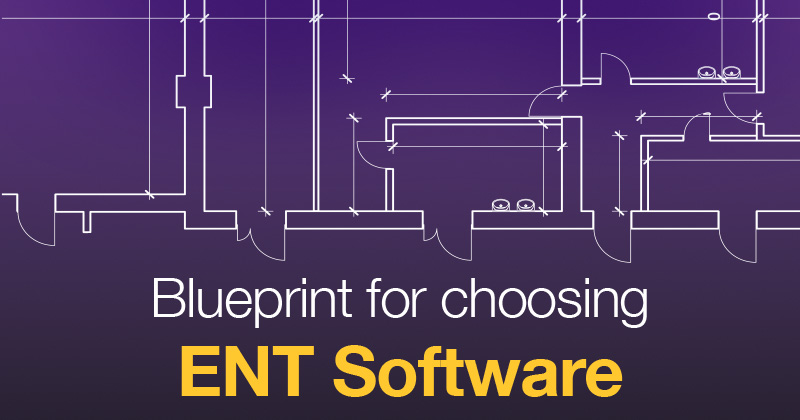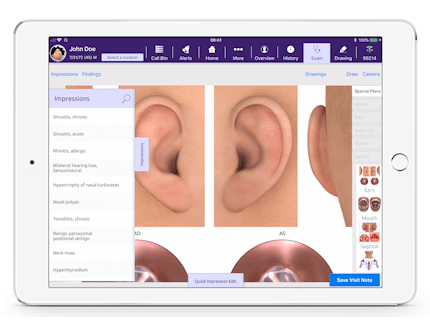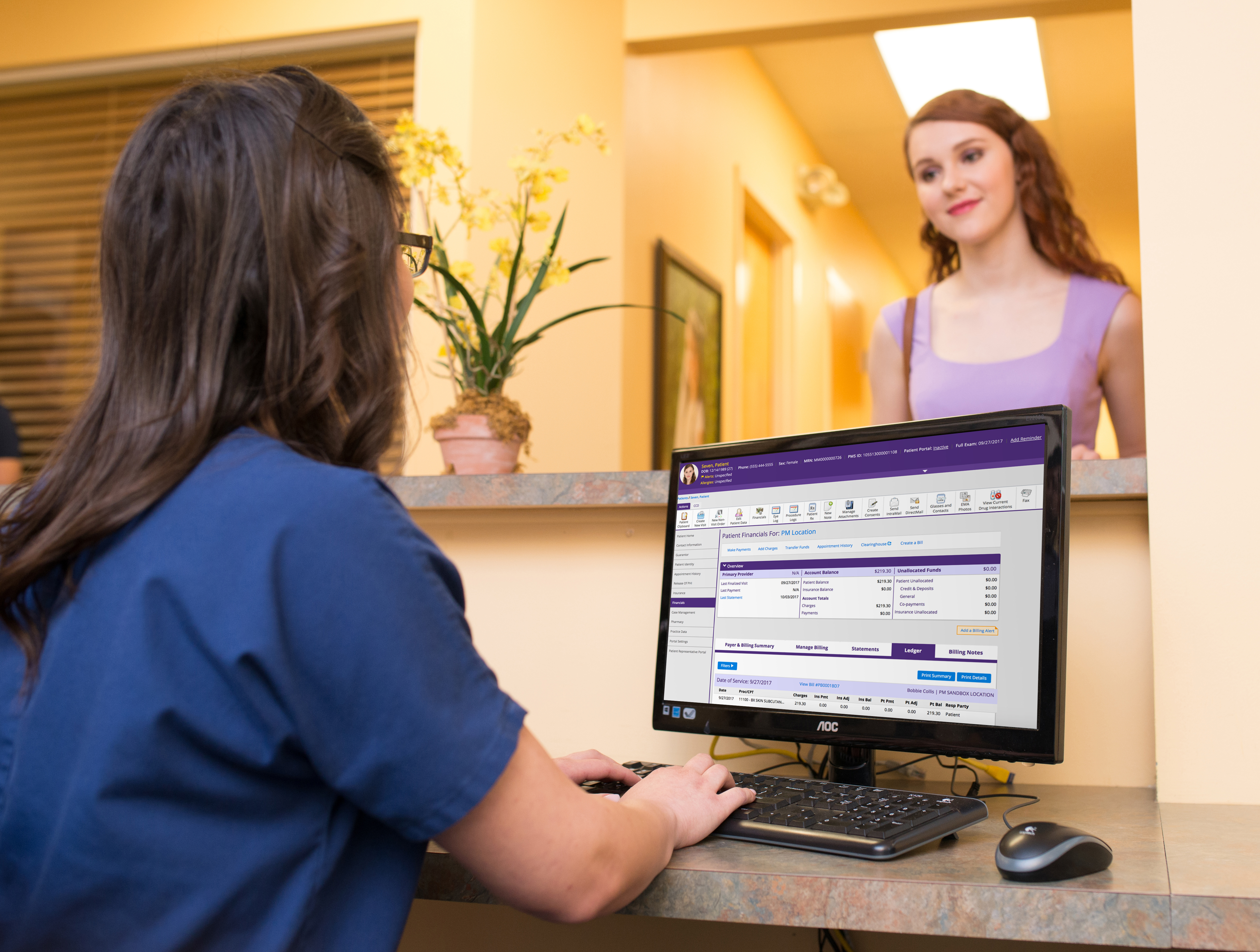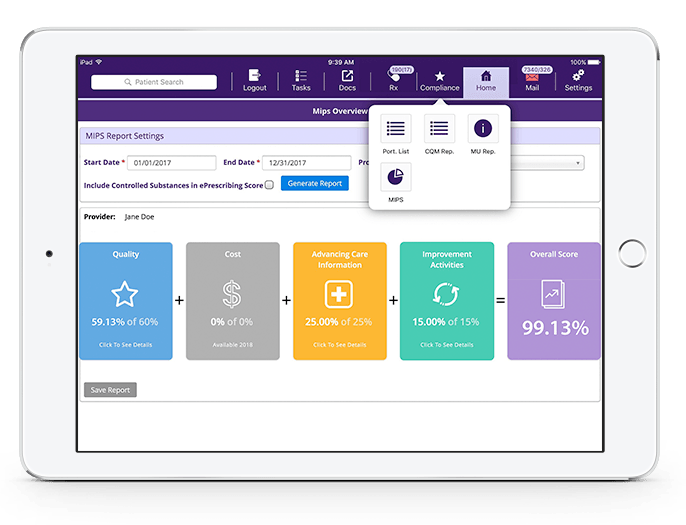Choosing the Right ENT Software for Your Otolaryngology Practice

One otolaryngologist shares his ENT EHR journey
When managing an otolaryngology practice, it’s essential to set yourself up for success by finding and utilizing the right tools. But that doesn’t just mean your scopes, microscopes and speculums. What many otolaryngologists don’t realize is that your ENT software is just as important—if not even more so.
In the exam room, the right otolaryngology EHR system can help you work faster. The wrong one, however, can slow you down with excessive clicking that distracts from patient care.
With an overwhelming number of EMR systems to choose from, how can you tell what sets the best systems apart so you don’t end up implementing one you regret? Ultimately, it’s all about knowing which features to look for.
Over the course of my own experiences with ENT software, I’ve learned some valuable lessons, which I’ll share with you. Hopefully, this article will help you to avoid making some of the same mistakes that I once made.
My ENT Software Selection Journey
When I first implemented electronic health records at my practice, I started with a generic all-specialty system, and I did my best to adapt it to my needs by building ENT templates. But on top of the time it took to build the templates, the language just didn’t flow, and the process of generating a note from a template was cumbersome.
Frustrated with these drawbacks, I eventually gave up on templates and began free typing all my notes. I was very fast at typing, but it was still difficult to capture all the necessary information reasonably quickly.
What I really needed was an EHR system that was built for ENT. This can be hard to find since ENT isn’t one of the largest specialties, but eventually, I did find one.
When I implemented it at my practice, I soon began to see improved results. The system had ENT knowledge and workflows built in, so I no longer had to spend all that time typing. Finally, I was free to focus on my patients.
To help your practice find similar success, I’m going to share the features that, in my experience, can have the biggest impact on your efficiency, practice performance and everyday convenience.
1. ENT-Specific System Built by Doctors
Given what I’ve told you about my story, it should come as no surprise that this is number one.
The reason it matters so much is that a primary care doctor, cardiologist and otolaryngologist all have completely different ways of working. They capture different data points in the chart, and they perform different procedures.
If I have to scroll past dozens of primary care fields in my EHR every time to get to the information that’s relevant to ENT, that’s a problem. It’s just not how I want to spend my time.
Also, not only is a primary care doctor’s workflow very different from mine, but also an EHR’s workflow can be very different from a doctor’s real-life workflow.
Even if software engineers do their best to study and reproduce the workflows they see doctors follow, they can never quite understand them the way a physician does.
So if your EHR software follows a loose approximation of a primary care doctor’s workflow, it might be very different indeed from your real-life ENT workflow.
For that reason, I chose to adopt ENT EHR software that was actually built by otolaryngologists. My system has thousands of chief complaints, diagnoses and plans built in, so I can access a wealth of knowledge—and customize it if I choose—without having to spend all that time building templates.
2. Adaptive Learning and Workflows
Put two otolaryngologists next to each other and ask them to document the same exam, and they may follow completely different methods. So how can otolaryngology EMR software accommodate this?
The answer is twofold. First, the software should provide more than one path for documentation. When there are options for how to use it, it’s much more likely that you’ll find a workflow that works just right for you.
Through this type of flexibility, ENT software can passively accommodate different preferences.
Second, the software should also be able to actively accommodate your unique practice patterns. How?
 Certain otolaryngology EHR systems come with adaptive learning that actually remembers your preferences, top cases and more. Over time, they get even smarter, learning to anticipate your next move in a wide range of situations.
Certain otolaryngology EHR systems come with adaptive learning that actually remembers your preferences, top cases and more. Over time, they get even smarter, learning to anticipate your next move in a wide range of situations.
Combined, these features can shave a surprising number of clicks off your documentation, which can save entire days if you add them all up over the course of a year.
Not only does this accommodation make documenting faster, but also I find it makes the process much more comfortable and convenient. Instead of feeling like I’m at odds with my ENT software and I have to work the way it wants me to, it’s actually modifying itself to work for me.
3. All-In-One ENT Software Suite
Up until now, we’ve focused on the software you use in the exam room. But your otolaryngology practice doesn’t end at the exam room door.
When choosing ENT software, you need to find something that accommodates the financial and operational aspects of your practice as well.
I’ve found that it’s vital to choose software systems that fit together as part of an all-in-one solution. Otherwise, you may experience confusion, miscommunication and inefficiency because people aren’t able to get the information they need when they need it.
Let’s take a deeper dive into what an all-in-one ENT software suite looks like, starting in the waiting room.
Waiting Room: iPad Patient Kiosk
As patients wait, you may want to provide an iPad kiosk for them to fill out their intake forms, as I am currently considering doing at my practice. Your staff’s time is valuable, and it can be beneficial for everyone if they spend less of it on reentering data.
Plus, reducing manual data entry leaves less room for errors and can be friendly and appealing to patients. As an added bonus, the right kiosk software can even enable patients to complete certain quality measures themselves, saving you even more time.
Front Office: Practice Management Software
Practice management (PM) software is aptly named, as it can play a crucial role in helping you manage your practice’s administrative aspects.
 Perhaps you’re already using a PM system to handle your billing, scheduling, check-in and collections. But ask yourself, how does information flow between the practice management software and your ENT EMR software?
Perhaps you’re already using a PM system to handle your billing, scheduling, check-in and collections. But ask yourself, how does information flow between the practice management software and your ENT EMR software?
If it goes through a bridge, you may be missing out on valuable opportunities to improve communication between clinical and office staff. Plus, you’re paying extra money for the bridge on top of the cost of the software.
So how smooth can the workflow be when your ENT EHR and practice management software are part of the same system? In some systems, checkout staff may actually be able to see what the result of the visit was, which can help them answer patient questions without having to ask you.
A good system may also include an appointment finder tool that automatically searches for the appointment you wanted the patient to schedule. For instance, if you ordered a six-month follow-up, when your staff goes to check out the patient, they’ll automatically see available follow-up appointments six months from now. If the patient prefers to come in Monday and Wednesday mornings, your staff can narrow down the suggestions with the click of a button.
Other key features to look for in an integrated PM system include automated eligibility verification, robust reporting tools, powerful claim scrubbing and a clearinghouse interface.
Beyond the Office: Patient Engagement Tools
Before the patient arrives and after they leave, you’ll want ENT software tools to help you stay in touch with them.
When you’re on the go, it can be helpful to have an ENT EHR smartphone app at your disposal. Personally, I find this type of app especially helpful when calling patients on the weekends to check in with them after surgery.
I can quickly review their records, then click on the patient’s phone number to call them. If they need a refill, I can ePrescribe right from my phone. And instead of waiting until I’m back in the office, I can add a brief note documenting the call right from my phone.
When you have all these tools at your fingertips, it can make life much easier—as long as they’re all part of the same system.
If you try to make several different ENT software systems from several different vendors work together, it can be too much to manage and may end up taking more time than it saves.
4. Automated ENT ICD-10 Code Suggestions
Going back to the exam room, I find that coding assistance tools are some of the most valuable features to have at your disposal.
Based on the data points I’ve documented, my EHR system is able to suggest ICD-10, CPT, E&M and modifier codes for me. It can even identify and document precise anatomical locations when I tap or draw on one of the 3D body diagrams, so I don’t have to enter the location separately.
As I’m documenting, the system also displays my estimated current E&M code, along with the criteria needed to reach a higher level. If I believe the visit warrants a higher level, I can document the appropriate criteria to support it.
When I’m done with the visit, my ENT EHR software automatically generates an encounter form complete with suggested codes. Instead of starting from scratch and having to search for codes manually, I can simply review them and make adjustments if needed.
This capability is so helpful in speeding up the process that it certainly warrants a place on your “must-have” list.
5. MIPS Dashboard
 How are you performing on CMS’ MIPS program today compared to your peers? Many otolaryngology EMR systems can’t tell you—they can only give you monthly reports and years-old peer benchmarks.
How are you performing on CMS’ MIPS program today compared to your peers? Many otolaryngology EMR systems can’t tell you—they can only give you monthly reports and years-old peer benchmarks.
But if you want to work towards avoiding the negative payment adjustment or earning a positive one, it’s important to know where you stand before it’s too late to make adjustments.
Because of this, you should look for ENT software that uses structured data to capture your MIPS data quickly and shows you how you’re doing on each measure and category in near-real time.
6. Instant Documentation
How often do you treat the same types of patients and conditions? I’m guessing it’s probably a lot.
To save you time on these common cases, a good otolaryngology EHR will allow you to preload diagnoses, plans, procedures and more in custom “master visits.”
This makes it possible to document common clinical scenarios, such as procedures or post-op visits, in seconds. And unlike with templates, you have the option to easily go back and change what you need to.
7. Mobile, Cloud-Based Technology
Does spending tens of thousands of dollars to buy and maintain onsite servers sound appealing to you? If not, you’ll want to look for a cloud-based ENT EHR.
With the cloud, you can get up and running faster when you’re first implementing your new otolaryngology EHR software.
Plus, you can log in from virtually anywhere you have a secure Internet connection. This can even include an EHR smartphone app like the one I mentioned above under patient engagement tools.
But the mobility doesn’t end there. Some cloud-based ENT EHRs also work on iPads, giving you greater mobility in the exam room and letting you face your patients instead of a computer screen.
Final Thoughts
If you can find an otolaryngology EHR system that incorporates the features discussed above, you’ll be well on your way to helping improve efficiency and performance at your ENT practice.
To help you find such a system, make sure you do thorough research as you go about the search process.
- During a typical day in clinic, pay careful attention to your workflow and note any areas that aren’t running smoothly. Ask your staff to do the same, and create a master list of all your practice’s workflow “pain points.”
- Then, visit ENT software vendors’ websites to get an overview of the functionality they provide. Consider how their otolaryngology EMR systems might work for your practice.
- When you’ve identified several strong candidates, request demos to see the software for yourself. Bring your list of workflow issues, and ask the vendors to show you how they can help solve them.
- And finally, ask vendors if you can speak to client references who currently use their ENT software. You may even be able to tour of one of their practices to see it in action.
It takes some time and effort, but ultimately, following all these research steps and looking for the features discussed above can help you choose the best ENT software for your practice.
I wish you the best of luck in your search!





